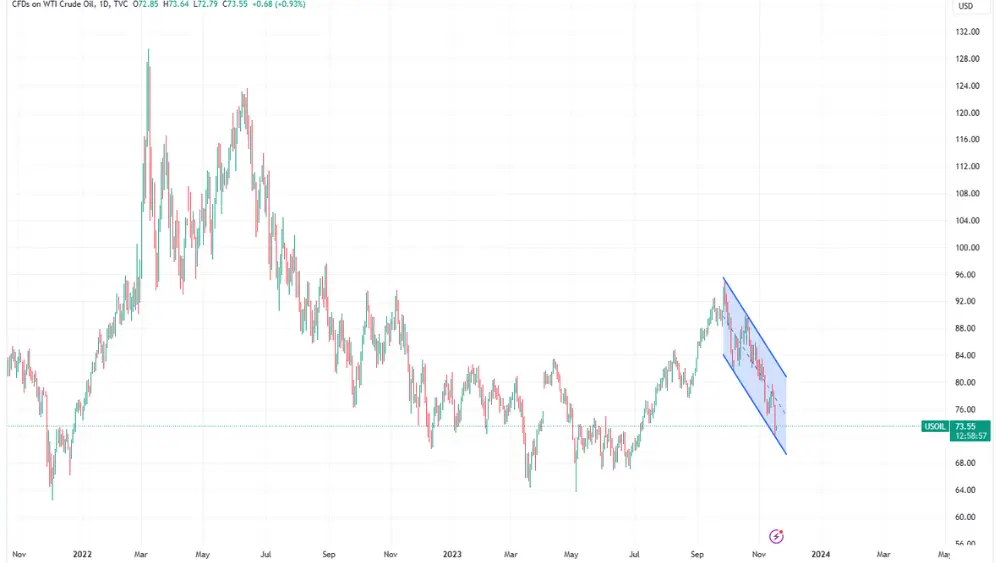On Thursday, U.S. crude prices experienced a 5% decline due to an increase in inventories and a simultaneous drop in industrial production. The West Texas Intermediate December contract saw a decrease of $3.76, or 4.9%, settling at $72.90 per barrel. Similarly, the Brent January contract witnessed a fall of $3.76, or 4.63%, settling at $77.42 per barrel. Both U.S. crude and the global benchmark reached their lowest levels since early July.
Data released by the Energy Information Agency on Wednesday indicated a rise of 3.6 million barrels in U.S. crude inventories last week, while production remained steady at a record 13.2 million barrels per day. Concurrently, U.S. industrial production declined by 0.6% in October, with the United Auto Workers strike affecting motor vehicle output, according to information released by the Federal Reserve on Thursday.
Oil expert Phil Flynn from the Price Futures Group noted that the combination of slower industrial production and increased supply contributes to the theory of slowing demand. The market is currently struggling to find support as bears exert control, he observed.

In China, crude refining throughput slowed by 2.8% in October to 15.1 million barrels per day, according to data from the National Bureau of Statistics. This suggests a decline in demand in the world’s second-largest economy, and Jim Burkhard, President of S&P Global Commodity Insights, emphasized that the impact of China’s economic reopening after the pandemic on oil prices is diminishing. Additionally, Burkhard highlighted the record oil production in the U.S., as well as production in Canada, Brazil, and Guyana.
The seasonal impact of demand typically slowing in the winter is also a factor, Burkhard explained. He stated, “When you have a strong wave of non-OPEC+ supply growth and a seasonal decline in demand, it leads to a situation like this.”
In contrast, the Organization of Petroleum Exporting Countries (OPEC) attributed the recent drop in prices to speculators, dismissing negative sentiment as exaggerated. OPEC emphasized that China’s crude imports remain healthy, rising to 11.4 million barrels per day in October. The organization also pointed to strong U.S. economic growth in the third quarter and cited the International Monetary Fund’s expectation of a 5.4% growth in China’s economy this year.
According to Flynn, hedge funds heavily shorting oil futures are driving the market lower, turning it into more of a “money game than a fundamentals game.” He highlighted the importance of how OPEC reacts at its November 26 meeting, noting that OPEC still believes speculators are driving the market, and it will be interesting to see if they can take measures to halt the free fall.



